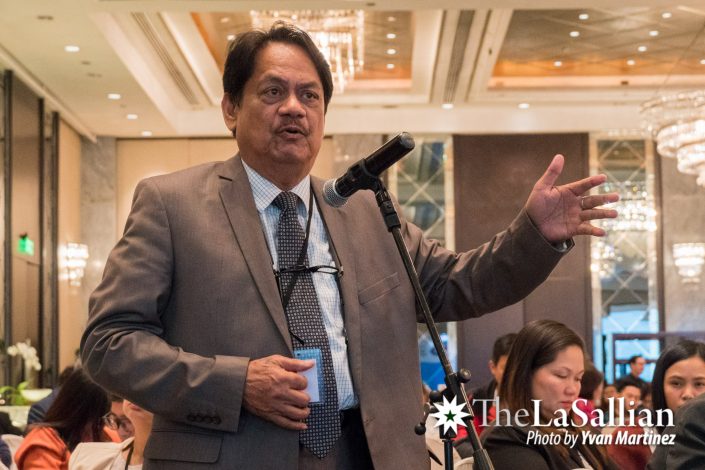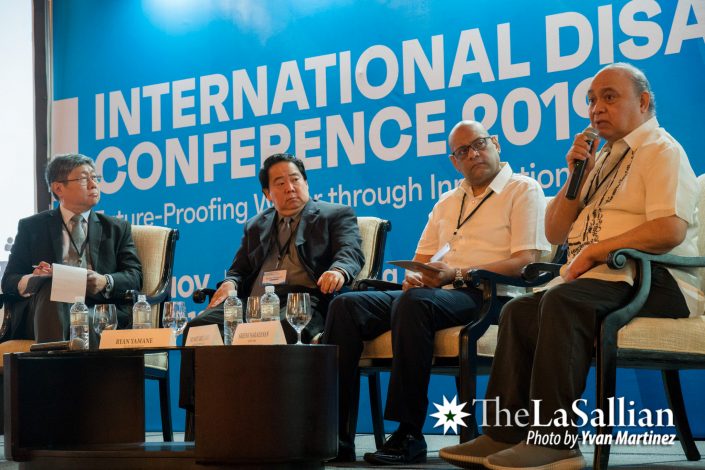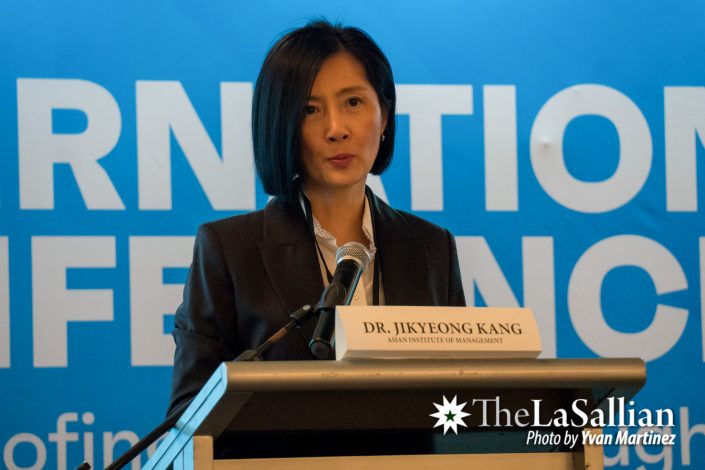Consider for a moment the power of water: without it, agriculture would be impossible and sanitation would be an afterthought. Yet, in excess, it can flood cities, drown life forms, and cripple even the mightiest economies.
During the International Disaster Conference 2019 held at The Peninsula Manila last November 21, matters concerning the depletion of global water resources were front and center. Industry leaders, policymakers, and researchers came together to discuss how to address water crises on the Philippine and global stage, especially with the climate emergency in view.
Themed Future-Proofing Water through Innovation, the event was organized by the Asian Institute of Management (AIM) Stephen Zuellig School of Development Management (ZSDM) and the Asia Society for Social Improvement and Sustainable Transformation (ASSIST).
The world as it stands
Dr. Jikyeong Kang, President and Dean of AIM, revealed that “nearly half of the global population resides in a water-scarce region” in her welcoming remarks.
Kang was followed by Dr. Kenneth Hartigan-Go, the Head of the AIM ZSDM, who explained the possible consequences of deficits in water supply. “Water scarcity can develop into armed conflicts over water that can destabilize regions,” he stressed, predicting that these conflicts will be on the rise due to climate change.
Patrick Wesner, Deputy Mission Director for the United States Agency for International Development (USAID) in the Philippines, explored the longstanding partnership between the United States and the Philippines, citing instances such as the aftermath of typhoon Yolanda, “USAID proved vital in relief efforts, being the first to have boots on the ground after the typhoon hit.”
Too little, too much
Worldwide water scarcity was tackled in the first plenary session, mediated by Hartigan-Go and joined by Engr. Frankie Arellano from Maynilad Water Services, Rep. Ryan Yamane of Hawaii, and Engr. Sreeni Narayanan from ASSIST Asia.
Yamane, who provided a view of the state of water scarcity in California and Hawaii, also shared policies and programs from the latter that aim to reduce water wastage and “bring together the public and private sectors,” through the implementation of new technologies. Arellano further supplemented this with a discussion on water infrastructure such as dams and reservoirs in the Philippines, particularly “those that supply Metro Manila”—Angat, Ipo, and La Mesa dams.
Afterward, Dr. Vinod Thomas, visiting professor at AIM, paneled with Dr. Adam Switzer from the Earth Observatory Singapore; Dr. Min-Hao Wu from the National University of Kaohsiung; and Butch Meily, President of the Philippine Disaster Resilience Foundation.
Meily touched on disaster response in the context of typhoon Yolanda, narrating how many of the first responders became victims themselves because the typhoon was “really that strong.”
He also emphasized the “importance of preparation and resilience in the face of calamities,” citing how New York City, where he used to live, was paralyzed in 2012 by hurricane Sandy “not because it lacked infrastructure, but because its residents were not prepared to face a hurricane of that caliber.”
Working in unison
In the succeeding session, Kevin Lee, Shared Aid Fund for Emergency Response Consultant, explained that the Philippines ought to ramp up preparations against probable environmental hazards given the country’s vulnerability to climate change and lack of disaster readiness initiatives. With this, Lee highlighted the need for reform in numerous areas such as balancing water supply and demand, climate resilience, and resource management.
Discussing the provision of water resources, Engr. Susan Abando from the National Water Resources Board noted the overuse of Angat Dam to satisfy various water-related needs of Metro Manila, predicting that “another water crisis” will occur next year. The engineer also lambasted the “unimproved Marcos-era infrastructure” still set in place today, calling for “further improvements” to these water services.
With regard to directly assisting communities that are “vulnerable” to natural disasters, the Philippine Business for Social Progress—a corporate-funded non-governmental organization (NGO)—has established the Water Alliance back in 2015. Comprised of the top leaders of the leading corporations in the country such as Coca-Cola FEMSA, Nestle, and Manila Water Co., the Water Alliance aims to give rural communities sustained access to potable water, decrease water footprint, and treat wastewater at company and industrial levels.

Meanwhile, Asian Development Bank Senior Water Resources Specialist Geoffrey Wilson addressed the other side of the coin. Wilson recognized that while creating organizations can help address the problem of water security, “ultimately the solution comes from further investments in [proper] infrastructure and good governance.”
Building up
In an interview with The LaSallian, Amy Gagala—who works for an international NGO—shared her thoughts on the conference.
She pointed out the lack of focus on rural communities, referring to the flood barriers project used to protect commercial centers and subway systems from flooding, which was presented by Flood Control Asia Representative Andreas Klippe. Gagala further asserted, “These are the people who are most vulnerable to flooding and they are the ones who we should get feedback from when making solutions.”


